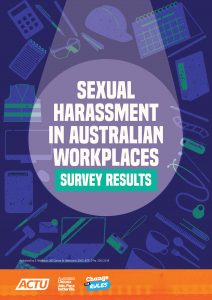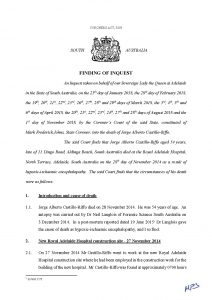 The trade union movement has often been instrumental in affecting and sometimes creating government policy on occupational health and safety (OHS). The latest generation of hazards – psychosocial – can be traced back to a survey late last century of workplace stress conducted by the Australian Council of Trade Unions (ACTU). This week the ACTU released its survey into sexual harassment at work.
The trade union movement has often been instrumental in affecting and sometimes creating government policy on occupational health and safety (OHS). The latest generation of hazards – psychosocial – can be traced back to a survey late last century of workplace stress conducted by the Australian Council of Trade Unions (ACTU). This week the ACTU released its survey into sexual harassment at work.
The current survey should not be seen as representative of any social group other than trade union members even though the survey was completed by 10,000 of them. Also, this survey is far less likely to be as newsworthy as last century’s surveys as the agenda on workplace sexual harassment has already been established by reports from groups like Universities Australia and, especially, the current work by the Sexual Discrimination Commissioner and the Australian Human Rights Commission. It is also likely to be covered, probably as a secondary issue, in the various mental health inquiries scheduled for 2019.
The ACTU survey provides additional information to our understanding of sexual harassment at work but certainly not the whole picture.

 Today,
Today,  Some readers have asked for more information about the “Share Solutions” program mentioned in a previous article. The initiative started in 1988 but this article is based on the second edition from 1995.
Some readers have asked for more information about the “Share Solutions” program mentioned in a previous article. The initiative started in 1988 but this article is based on the second edition from 1995. There have been many inquiries and investigation in Australia and elsewhere about the “future of work” but rarely about the “future of the worker”. Research often looks at how work may be transformed by technology and new labour/employment structures with an assumption that the worker is a passive and static element in this change. Those in occupational health and safety (OHS) and workers’ rehabilitation know that this is not the case.
There have been many inquiries and investigation in Australia and elsewhere about the “future of work” but rarely about the “future of the worker”. Research often looks at how work may be transformed by technology and new labour/employment structures with an assumption that the worker is a passive and static element in this change. Those in occupational health and safety (OHS) and workers’ rehabilitation know that this is not the case. If all you knew about occupational health and safety (OHS) was what you read in the physical or online newspapers , you would not know anything about safety management – or maybe anything positive. It takes being involved with managing safety in the real world to understand how OHS operates in the real world. But even then we only learn from our own experiences.
If all you knew about occupational health and safety (OHS) was what you read in the physical or online newspapers , you would not know anything about safety management – or maybe anything positive. It takes being involved with managing safety in the real world to understand how OHS operates in the real world. But even then we only learn from our own experiences.
 On the corner of Lygon and Victoria Streets in Melbourne is a monument to the 8 Hour Day. This represents a social structure of work that equates to
On the corner of Lygon and Victoria Streets in Melbourne is a monument to the 8 Hour Day. This represents a social structure of work that equates to